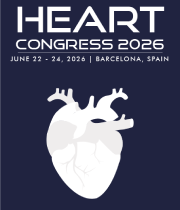Title : The cause of transient ischemic attacks
Abstract:
Transient ischemic attacks (TIA) accounts for about 80% of all strokes. TIA occurs when microvessels and capillaries in some part of the brain become clogged as a result of one of two mechanisms - either thrombosis or embolism. But where do these obstacles to blood flow disappear 15-60 minutes after the TIA attack passes? There is no answer, even such a question is not posed. In fairness, some modern medical scientists note: in some cases [1], even with a thorough examination of a patient who has suffered a transient ischemic attack, it is not possible to find out its cause (TIA of unclear genesis).
Medicine, of course, does not stand still, but for more than two hundred years no answer has been received to the questions: why does atherosclerosis develop? What is the cause of ischemic brain attacks? Too many people are losing developed countries because of strokes. Let's figure out, what are the reason for the transient ischemic attacks? There should be one reason, not a whole list. The usual medical list is related factors, but not the cause or mechanism.
It is necessary to answer the main question. Why do TIA occur? Usually, the answer of doctors is as follows. The main cause of TIA is atherosclerosis, which contributes to thrombosis, or blood clots with blood flow can be moved from other parts of the body, for example, from the heart. In the opinion of the author of the new theory, such an answer regarding TIA is not quite complete. The question as it was, and remained: where did the microthrombs go after 15 - 60 minutes after TIA? And why at these minutes (and before this event) does blood pressure rise very quickly to critical values?
According to the new theory[2-4], TIA occurs due to a lack of arterial blood volume in the arteries. As an adverse event, blood can flow from the arteries to the veins through open large arteriovenous anastomoses (AVA). This may be due to physical or psychological stress. For example, when working continuously for several hours in a sitting position, at a computer or other device. Usually stress, low physical activity, excess weight, fatigue leads to an increase in blood pressure, but not to critical values.
With a significant leakage of blood, the internal volume of the arteries should adequately decrease by the same amount, and the venous volume should increase. But since the walls of large arteries are usually more rigid with age due to atherosclerosis, the decrease in the internal volume of the arterial bed occurs due to the small and most distant arteries from the heart. You can observe this yourself: your hands and feet are getting cold. There is a spasm of the smallest, and according to physical laws (gravity), located in the upper parts of the body, specifically in the brain. The optimal pressure difference between arterioles and venules in some parts of the brain becomes critically reduced. The average pressure between them also reaches a minimum.
With an increased glucose content in the blood, perfusion also worsens, because blood fluidity decreases. The flow will slow down or stop. At this time, gas bubbles and micro emboli begin to form in the capillaries and in the brain tissue. Not in one or several points, but in a certain volume of brain tissue, on the group of capillaries most remote from a large artery. The system that monitors the normal perfusion of brain tissue reacts to these events and requires an increase in blood pressure to nourish the brain, since the brain is the main organ of a person. But since the volume of arterial blood is already insufficient, an increase in blood pressure can lead to even greater losses of arterial blood through AVA, normal perfusion is not restored. The situation is getting worse. The pressure exerted by the heart and large arteries continues to rise at these minutes. At these minutes, TIA or a brain stroke may occur. Then everything depends on the efficiency of emergency medical care.
For example, injection of magnesia solution forcibly dilates arterioles, venules and other vessels in all organs. The volume of arterial blood increases rapidly due to the reabsorption of a certain amount of blood and tissue fluid through arterioles into large arteries. Gas emboli are spontaneously eliminated (collapse) when the pressure in brain arterioles of increases. After a while, systemic pressure and arterial circulation are restored. If help is provided on time, the symptoms of TIA gradually disappear, memory is restored.
Now we can say that the main course of acute cerebrovascular accident is the loss of arterial blood volume - hence hypertensive crises, TIA and, ultimately, strokes. In 2018, author himself went through a hypertensive crisis, TIA and rehabilitation. The experience gained suggested what can happen to the cardiovascular system and the human brain.



